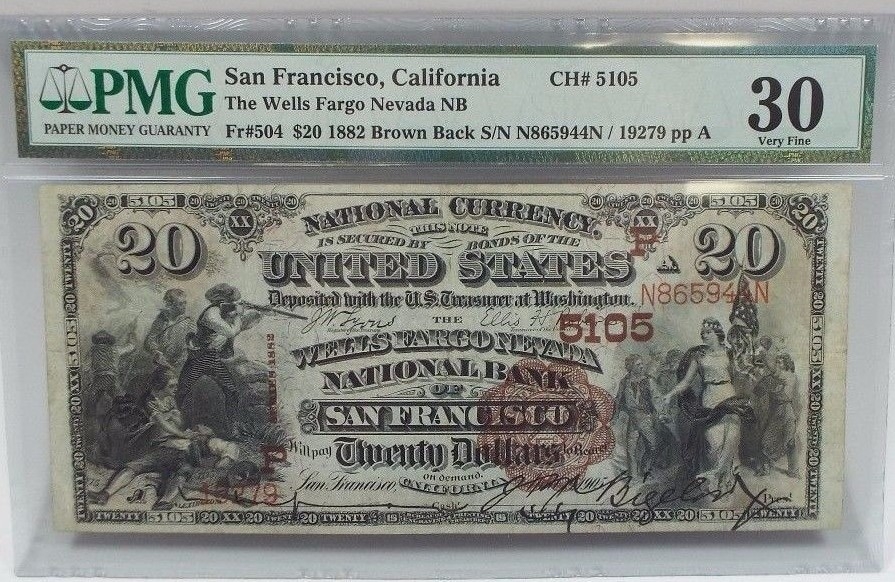Paper, stacks, racks, Greenbacks, and bread are some of the common terms
for Government Issue banknotes or paper currency. The first known paper money
was printed by the Tang Dynasty in China (618-907) out of a combination of tree
bark and hemp. Today, banknotes have evolved out of various forms of materials
including special paper formulas and even polymers (plastics).
"Paper" note from the early years of the Ming Dynasty
America produced its first coins for circulation in 1793, a large cent and half cent. It wasn’t until 68
years later that the first legal tender banknote was printed. From 1793 to 1861,
several events such as the War of 1812, Mexican War of 1846, and the financial panic
of 1857 brought much strain on the burgeoning early American economy. In an
attempt to remediate the lack of circulating currency, some states allowed private
banks to issue their own currency to meet the growing demand. These privately
issued notes were backed by the amount of money private banks had on deposit.
Unfortunately, times were rough for many private banks and customers could not
pay interest on their loans, therefore these banks became broke. They were known
as broken banks and their currency, you guessed it, “broken banknotes.” Today,
many of these “broken banknotes” are sought after by collectors. Most have a value
between $20-$250.
The Civil War brought a huge shift in American history. Breaking out
in 1861, financing the war became a problem. Both sides had supply problems and
were in desperate need of money, therefore many solutions were formulated
including: increasing the national debt, implementing the first income tax, and
issuing national paper currency. This was the first time the public was expected to
accept currency backed by faith in the government that it would be good. The
confederate states began issuing their own currency as well from 1861-1865. The
banknotes were initially exchanged on par with regular money or bank notes, but as
the war progressed and southern finances began to dry up, Confederate Currency
depreciated drastically. Five-dollar banknotes became worthless, and a bar of soap
would sell for as much as $50! The nation lacked a central banking system and relied
heavily on private banks, therefore in 1863, the Union passed the National Banking
Act allowing private banks to apply for federal charters, giving birth to National
Banks or National Currency. These banks purchased Union bonds and deposited
them in the Treasury in Washington D. C.; they were then allowed to issue National
Bank Notes for up to 90% of the value of the deposited bonds. Most confederate
notes ($1-$100) have a value between $25- $200. The value of the average circulated $5-$20
National Currency banknote is between $40-$300, with uncirculated and rarer banks fetching a premium above that. A general rule of
thumb is the smaller the city, the more value it has.




